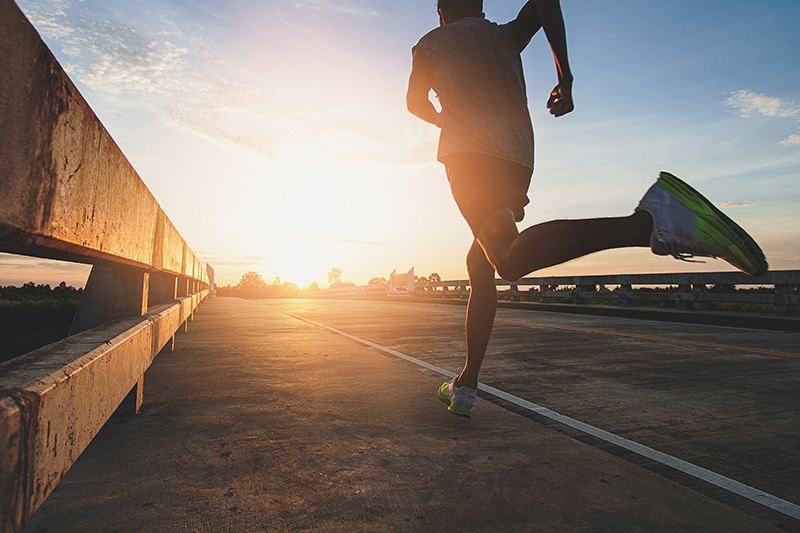In the pursuit of peak athletic performance, runners often find themselves grappling with a myriad of challenges – from maximizing speed and endurance to preventing injuries that can derail progress. However, amidst the wealth of training techniques and gear enhancements available, one tool stands out as a game-changer: professional 3D running gait analysis. By harnessing cutting-edge technology and expert analysis, runners can unlock their true potential, running faster, longer, and pain-free. In this comprehensive guide, we delve into the evidence supporting the transformative benefits of 3D gait analysis for runners.
Understanding the Mechanics of Running:
Before delving into the benefits of 3D running gait analysis, it's crucial to grasp the intricate mechanics of running. Running is a complex interplay of various factors, including biomechanics, muscle strength, flexibility, and neuromuscular coordination. Each runner has a unique gait pattern influenced by factors such as foot strike, stride length, cadence, and joint angles.
The Importance of Proper Running Form:
Efficient running form is the cornerstone of optimal performance and injury prevention. When biomechanics are suboptimal, runners are prone to inefficiencies that can hinder speed and endurance while increasing the risk of overuse injuries. Common issues such as overpronation, excessive heel striking, or inadequate hip stabilization can lead to discomfort and decreased performance.
The Role of 3D Gait Analysis:
Professional 3D running gait analysis offers a comprehensive evaluation of an individual's running biomechanics using advanced motion capture technology. By precisely measuring and analyzing key parameters of the running gait, such as foot strike angle, joint motion, and ground reaction forces, 3D gait analysis provides invaluable insights into a runner's mechanics.
- Precision and Accuracy:
One of the primary advantages of 3D gait analysis is its unparalleled precision and accuracy. Unlike traditional gait analysis methods, which rely on subjective observation or basic measurements, 3D motion capture technology captures intricate details of movement with millimeter-level accuracy. This level of precision allows for a comprehensive assessment of biomechanical deviations and asymmetries that may go unnoticed otherwise.
- Identification of Biomechanical Abnormalities:
Through 3D gait analysis, runners can identify and address biomechanical abnormalities that contribute to inefficiencies and injury risks. By pinpointing issues such as excessive pronation, asymmetrical gait patterns, or muscle imbalances, runners can implement targeted interventions to optimize their mechanics. For instance, custom orthotics, strength training programs, or gait retraining techniques can be tailored to address specific deficits identified through analysis.
- Individualized Training Recommendations:
Based on the findings of 3D gait analysis, runners receive personalized recommendations to improve their running mechanics and performance. These recommendations may include exercises to strengthen weak muscles, stretches to improve flexibility, adjustments to footwear or orthotics, and modifications to running technique. By addressing underlying biomechanical issues, runners can enhance efficiency, reduce injury risk, and maximize their running potential.
- Performance Enhancement:
Optimizing running biomechanics through 3D gait analysis can lead to significant performance enhancements. By minimizing energy wastage associated with inefficient movement patterns, runners can increase speed, endurance, and overall running economy. Moreover, improvements in running form can facilitate better propulsion and ground reaction forces, translating to faster race times and improved athletic performance.
- Injury Prevention:
Perhaps the most compelling benefit of 3D gait analysis is its role in injury prevention. By identifying biomechanical risk factors predisposing runners to injury, such as excessive pronation or abnormal joint loading, proactive interventions can be implemented to mitigate these risks. Studies have shown that runners who undergo gait analysis and subsequent interventions experience reduced injury rates and improved long-term running outcomes.
Evidence Supporting the Efficacy of 3D Gait Analysis:
Numerous studies have demonstrated the efficacy of 3D gait analysis in improving running performance and reducing injury risk:
- A systematic review published in the Journal of Orthopaedic & Sports Physical Therapy concluded that 3D gait analysis is effective in identifying biomechanical factors associated with running injuries and guiding interventions to prevent them.
- Research published in the Scandinavian Journal of Medicine & Science in Sports found that runners who underwent 3D gait analysis and received individualized interventions experienced significant improvements in running mechanics, performance, and injury rates compared to control groups.
- A study conducted by the American Journal of Sports Medicine demonstrated that runners who underwent gait retraining based on 3D analysis exhibited reduced impact forces and loading rates, which are key determinants of injury risk.
Conclusion:
In conclusion, professional 3D running gait analysis is a powerful tool for optimizing performance and preventing injuries in runners. By providing precise insights into biomechanical mechanics and individualizing interventions, 3D gait analysis empowers runners to run faster, longer, and without pain. As the evidence overwhelmingly suggests, investing in a comprehensive gait analysis can unlock your true running potential and propel you towards your athletic goals.
